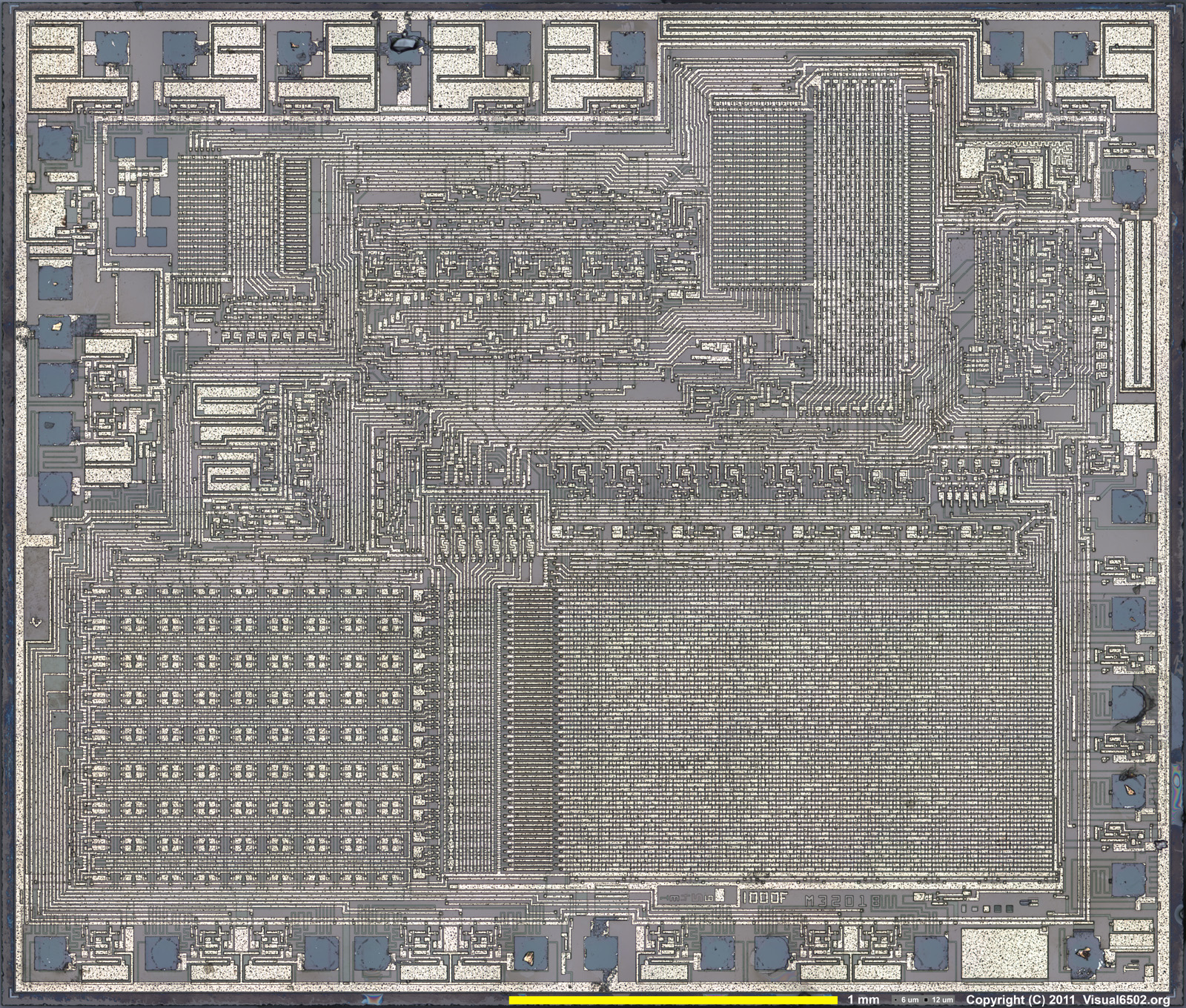I'm still looking for the Microvision ROMs - hopefully I can get some of the early dumps that some of our technical geniuses have done. Apparently the MESS Microvision emulation does work - to some extent anyway, and browsing that source my interpretation of the controller and theirs aren't that different.
There's two methods. The TMS1000 patent describes a method of testing the chips by dumping the ROMs serially. It was known this was possible, but not how to do it, but it seems it has been figured out.
The second is direct examination - taking the top off the chip, scanning it at high resolution and converting that to binary code - the picture is a TMS1100 die.
It would be great if the Microvision stuff was dumped - it's one of the few last old machines that hasn't been dumped yet. Not that anyone would really want to play the games, it's more of a preservation thing.
Reading the MESS source also revealed the clock speeds. I have had a problem with this, because whilst the TMS1000 data book is very informative on coding, it's not on the physical hardware, I couldn't find a clock speed descriptor (the clock circuit values are on Dan Boris' circuit).
In practice, it varies, there are 300Khz, 500Khz and 550Khz clock speeds, which correspond to 50Khz, 83Khz and 92Khz instructions per second (every TMS1x00 instruction takes 6 clocks).
An early example of over clocking. The data book says that fOsc (the clock) has a maximum speed of 350Khz, on the previous page oddly it says that tc, the instruction cycle time is 2.5us minimum (e.g. 400Khz). I guess the Microvision coders had the same problems I did viz. simply getting LCD information to the display quickly enough uses up most of the coding time.
Though in my experiments if you only have 2 or 3 things on the screen, or a few lines, it is quick enough. The diagonal line drawing is slow because it's a pixel plot - effectively PLOT(X,Y) so for X and Y it has to convert it to a bit pattern ($8000 >> x) basically, and that's what takes the time up, not the writing to the LCD. If you have the nibble pattern already, I would reckon BlockBuster works like this for the 'wall' it's much quicker.
